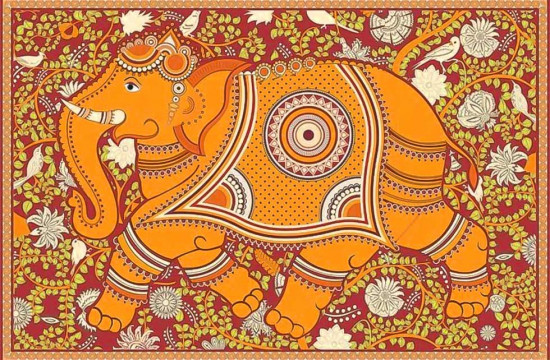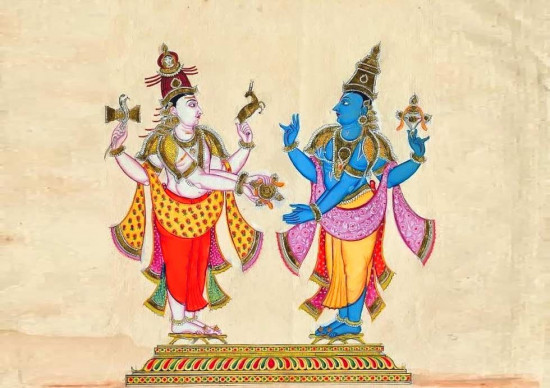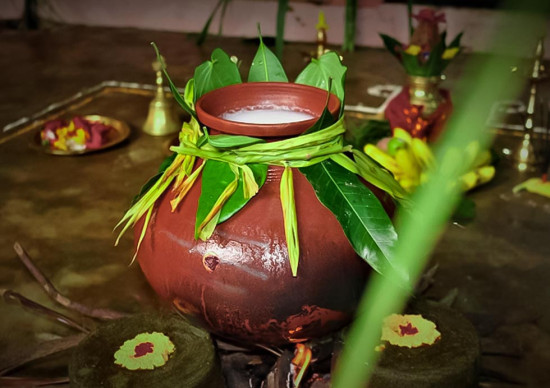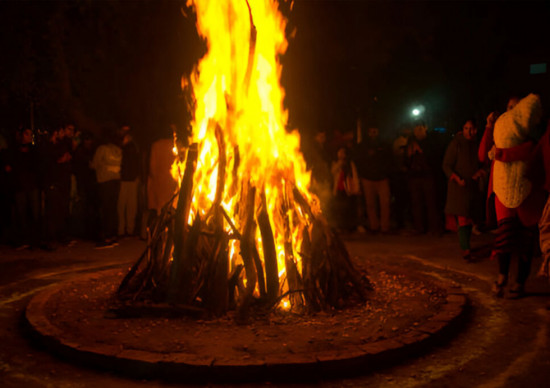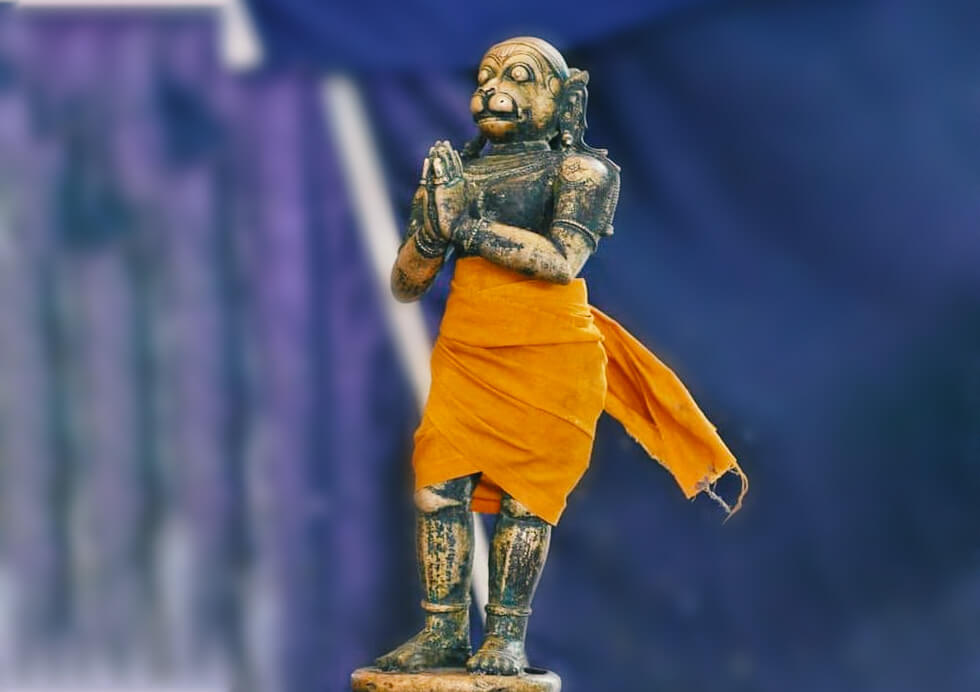
Devotees of Lord Hanuman, known as "Hanumān bhaktas," span across diverse backgrounds and cultures, drawn together by their reverence for this beloved deity. Bajrangbali is often depicted in various forms, from his heroic pose holding Mount Meru on his hand when he goes to find the Sanjeevani booti, to the poignant representation of tearing open his chest to reveal Lord Rama and Sita Mata within. These depictions vividly illustrate his profound devotion and unwavering loyalty in Hindu literature.
His temples, found throughout India and beyond, are centers of worship and pilgrimage, where devotees seek his blessings for strength, protection, and spiritual guidance. Hanuman's teachings and stories inspire countless individuals to cultivate virtues such as humility, dedication, and devotion in their own lives.
The Colossal Paritala Hanuman Statue
As an immortal figure in Hindu Puranas, Lord Hanuman continues to capture the imagination and devotion of millions, embodying the timeless ideals of service, devotion, and unwavering loyalty to the divine.
Here’s a brief exploration of how Lord Hanuman statues have evolved in Indian art:
Ancient and Medieval Periods
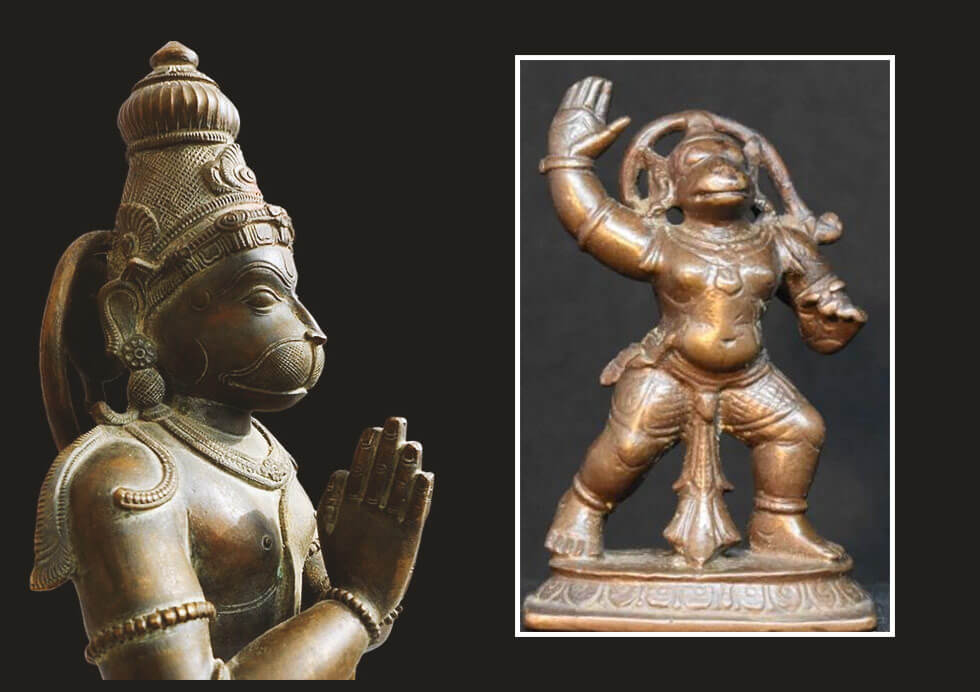
Temple Sculptures: Temples dedicated to Lord Hanuman, especially those associated with Lord Rama, featured statues that captured various facets of his persona. Hanuman is often depicted in a standing or kneeling posture, showcasing his readiness to serve and protect. In many statues, he is shown holding a mace (gada), symbolizing strength and protection, or lifting a mountain (as in the Ramayana episode of bringing the Sanjeevani mountain), highlighting his heroic deeds and unwavering dedication.
Regional Variations: Different regions of India developed their own distinct styles of portraying Hanuman in sculptures. These variations were influenced by local traditions, artistic conventions, and regional interpretations of Hanuman's character and stories. For example, in South India, Hanuman statues might depict him with a more human-like face and a distinct regional aesthetic, while in North India, his portrayal might emphasize his divine monkey features more prominently.

Overall, the depiction of Lord Hanuman in ancient and medieval sculptures reflects a deep reverence for his role in Hindu mythology, his heroic exploits in the Ramayana, and his enduring qualities that continue to inspire millions of devotees worldwide. These statues not only narrate stories from the epics but also invite worshippers to connect with the divine through visual representations that evoke both awe and devotion.
Mughal and Post-Mughal Periods
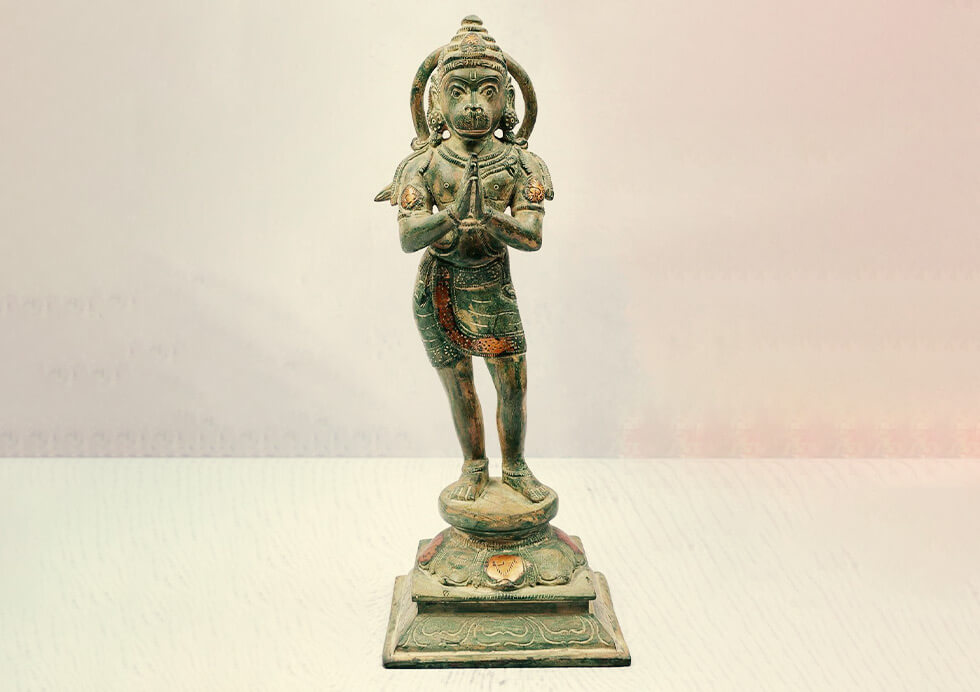
During the Mughal and Post-Mughal periods in India, the depiction of Lord Hanuman in statues underwent a fascinating evolution influenced by the cultural and artistic milieu of the time.
- Integration with Islamic Art: The Mughal period witnessed a synthesis of Hindu and Islamic artistic traditions, and this fusion extended to depictions of Hanuman. In some instances, Lord Hanuman statues incorporated elements of Persian and Islamic art styles. This integration was not merely stylistic but also reflected the cultural exchange and mutual influence between Hindu and Islamic communities under Mughal rule. For example, Hanuman statues might have been adorned with intricate floral patterns, arabesques, or calligraphic elements that are characteristic of Islamic art.
- Courtly Art:Hanuman statues commissioned by Mughal rulers and nobility exemplified the courtly art of the time. These statues were often crafted with meticulous detail and artistic finesse, reflecting the patronage of the elite and their appreciation for both Hindu religious symbolism and the refined aesthetics of Mughal court art. Hanuman was portrayed in poses that conveyed his heroic attributes and divine strength, resonating with the grandeur and sophistication of Mughal artistic expression.
Colonial and Modern Periods
Artists and sculptors of this era undertook a deliberate effort to revive ancient techniques and styles used in creating Hanuman statues. They studied ancient scriptures, temple carvings, and regional artistic traditions to meticulously recreate Hanuman in his various forms. These statues were not only religious icons but also symbols of cultural identity and pride, embodying qualities such as strength, devotion, and righteousness that Hanuman represents in Hindu mythology.
Moving into contemporary times, Hanuman statues continue to evolve under the influence of modern art. Today, artists interpret Hanuman in diverse ways, blending traditional iconography with modern sensibilities. Some artists choose to experiment with abstract forms, exploring unconventional materials and interpretations that challenge traditional representations. This experimentation reflects a desire to reinterpret Hanuman's timeless symbolism within contemporary artistic contexts.
Conversely, other artists maintain classical representations of Hanuman, preserving traditional iconography while infusing subtle nuances of modern aesthetics. These statues often emphasize detailed craftsmanship and symbolic elements that resonate with both spiritual reverence and artistic appreciation.
The influence of modern art has introduced Hanuman statues in a variety of artistic interpretations, appealing to a wide audience with differing cultural backgrounds and artistic tastes. Whether abstract or classical, these statues serve as cultural artifacts that bridge the gap between tradition and modernity, offering new perspectives on Hanuman's enduring significance in Indian spirituality and artistic expression.
Symbolism and Iconography
Pose: The poses of Lord Hanuman in artistic representations vary widely, each conveying different aspects of his persona. He is frequently depicted in a standing posture, symbolizing readiness and strength. Sitting or kneeling poses often emphasize his humility and devotion, particularly in scenes where he is venerating Lord Rama. One of the most iconic depictions is Lord Hanuman in mid-flight, carrying the mountain Dronagiri to aid in the healing of Lord Lakshmana, showcasing his ability to undertake monumental tasks with grace and determination.
Devotional Variants: Devotees of Bajrangbali often create smaller statues and figurines for personal worship, each imbued with profound symbolism. These statues emphasize Lord Hanuman's protective and benevolent qualities, serving as focal points for devotion and prayer. Devotional variants of Lord Hanuman statues are crafted with meticulous detail to capture his compassionate gaze and powerful stance, inspiring a sense of reverence and spiritual connection among worshippers.
Lord Hanuman's symbolism and iconography not only illustrate his heroic feats and unwavering devotion but also serve as reminders of courage, loyalty, and selflessness in the pursuit of righteousness. Whether through the attributes he carries, his varied poses, or the devotional statues crafted in his honor, Lord Hanuman continues to inspire devotion and admiration among millions worldwide, embodying timeless values that resonate across cultures and generations.
Materials and Techniques
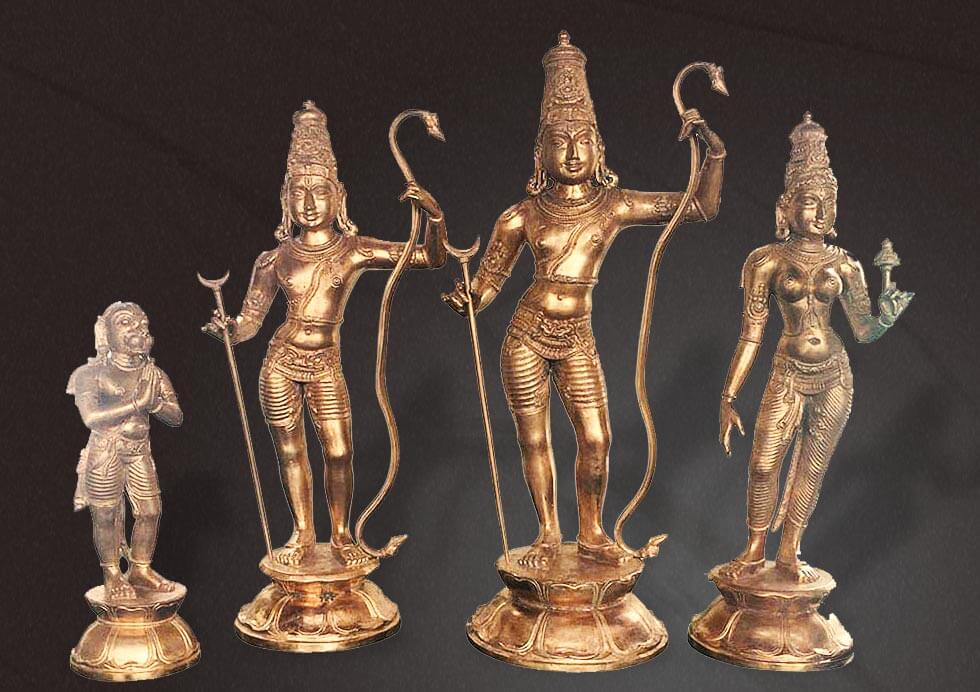
These traditional materials not only provided longevity to the statues but also allowed artisans to imbue each piece with spiritual significance through meticulous craftsmanship. Techniques such as sculpting, carving, and casting were employed to bring Hanuman to life, ensuring that every statue conveyed the divine attributes and symbolic gestures associated with him.
Contemporary Approaches: In modern times, Hanuman statues have embraced a range of materials and techniques that reflect contemporary artistic sensibilities and technological advancements. Metals such as brass, copper, and even stainless steel are commonly used for creating Hanuman statues, offering flexibility in design and a variety of finishes. Fiberglass has gained popularity for its lightweight properties and versatility in shaping intricate details, making it suitable for both indoor and outdoor installations.
Furthermore, contemporary approaches to Hanuman statues may extend into digital art forms, where artists utilize computer-generated imagery (CGI) and 3D printing technologies to produce innovative interpretations of Hanuman's iconography. These digital sculptures allow for experimentation with form, texture, and scale, pushing the boundaries of traditional craftsmanship while maintaining the essence of Hanuman's symbolism.
Cultural Significance
In Hindu tradition, Hanuman is celebrated for his unwavering loyalty to Lord Rama and his unparalleled bravery. Statues of Hanuman are often crafted depicting him in a powerful stance, reminiscent of his heroic feats as narrated in the ancient epic, the Ramayana. These statues serve not only as focal points for religious devotion but also as cultural symbols that inspire individuals to emulate Hanuman's virtues in their own lives.
During temple rituals and festivals, Hanuman statues take on a central role. They become focal points of elaborate ceremonies where devotees gather to offer prayers, chants, and devotional songs. Hanuman's presence in these rituals enhances the spiritual atmosphere and deepens the connection between worshippers and their faith.
Moreover, Hanuman statues play a crucial role in storytelling within Hindu communities. The narratives of Hanuman's exploits, his role in rescuing Sita and battling evil forces, are recounted during religious discourses and festivals. These stories not only entertain but also impart moral and ethical lessons, reinforcing the values of devotion, loyalty, and courage that Hanuman exemplifies.
In essence, Hanuman statues transcend their physical forms to become potent symbols of faith, strength, and community within Hindu culture. They inspire believers to cultivate inner strength and uphold righteous principles, making them integral to the spiritual and cultural tapestry of India and beyond.
In summary, the evolution of Hanuman statues in Indian art reflects the dynamic interplay of tradition, culture, and artistic expression over millennia. From ancient temple sculptures to contemporary interpretations, Hanuman’s imagery continues to inspire spiritual devotion and artistic creativity across India and beyond.


